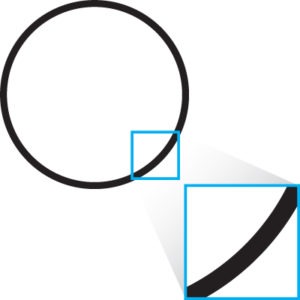Art Creation &
Design
Our art department is fully capable of creating your ideas into an amazing design; however, in order to do this, there are some things we'll need from you.
In order to streamline this process, our artists will need to know a few things to have a foundation to get the ball rolling.
- Specifics are important; give us specific examples of what it is you are looking for in your design. E.g. athletic mascot graphic, perhaps a lion's head with athletic text.
- Provide the specific color(s) you want in your design.
- If providing a jpg, png or gif as a reference only, make sure the image is at a high-quality resolution, and large enough dimensions. The resolution needs to be 200-300 dpi and the dimensions of the image should be 5 inches in width and height or larger. In any case, larger is better.
- Please provide exactly where your design will be placed on the garment. We need to know the location(s) of the design to ensure the image fits well.
Artwork Guidelines
Providing correct artwork is one of the most important factors to producing a high-quality print. We have provided information on how to provide artwork in the correct format so that we may print in the highest quality possible. If you already have vector, print-ready art, you may send it to use with your purchase order for production. If you're not sure if your art is print-ready, feel free to send it to us for consultation.
Acceptable File Formats
- AI - An AI file is the original, editable, working file. EPS files are also acceptable. be sure there are no raster images included in the files.
- PDF - The PDF format is becoming widely favored by most designers as it can be universally viewed on any computer with Adobe Acrobat (or another PDF viewer). It's also possible to preserve Illustrator editing capabilities when saving in this format, meaning it can be opened and modified in the same way as an AI file.
Unacceptable File Formats
These file formats are not accepted as print-ready art files; however, we can accept these files ONLY AS A REFERENCE to recreate the image as new artwork. Art time and charges will apply.
- JPG, PNG, GIF - Because these are basic raster images, they cannot be rendered and used as-is for printing.
- DOC, XLS, PPT - These file types are good for accompanying files to provide art instructions and information but are unable to be screen printed directly.
- CDR - This file type is from Coreldraw and is a vector file; however, these must be converted to an EPS file-type for us to use.
Vector Images
Vector art is created using vector illustration software programs, such as Adobe Illustrator or Corel Draw. These programs use mathematic equations and geometric primitives (points, lines, and shapes) to create art that is clean, camera ready, and can be scaled infinitely, without any loss of quality or fidelity.

Raster images
Raster graphics, also called bitmap graphics, are digital images that are composed of tiny rectangular pixels, or picture elements, that are arranged in a grid or raster of x and y coordinates (includes a z coordinate in case of 3D) in such a way that it forms an image. It is also referred to as bitmap since it has information that is mapped directly to the display's grid.
The file size of a raster image depends also on the size of the image, which is determined by the number of pixels being used in the image. This means that an image with 1280x720 resolution will contain 921,600 pixels while a full HD 1920x1080 image will have 2,073,600 pixels, which will obviously give it a bigger file size when compared to the former.

